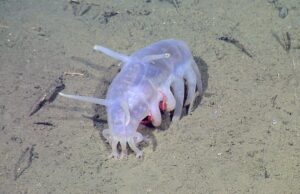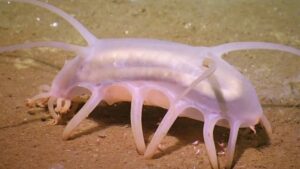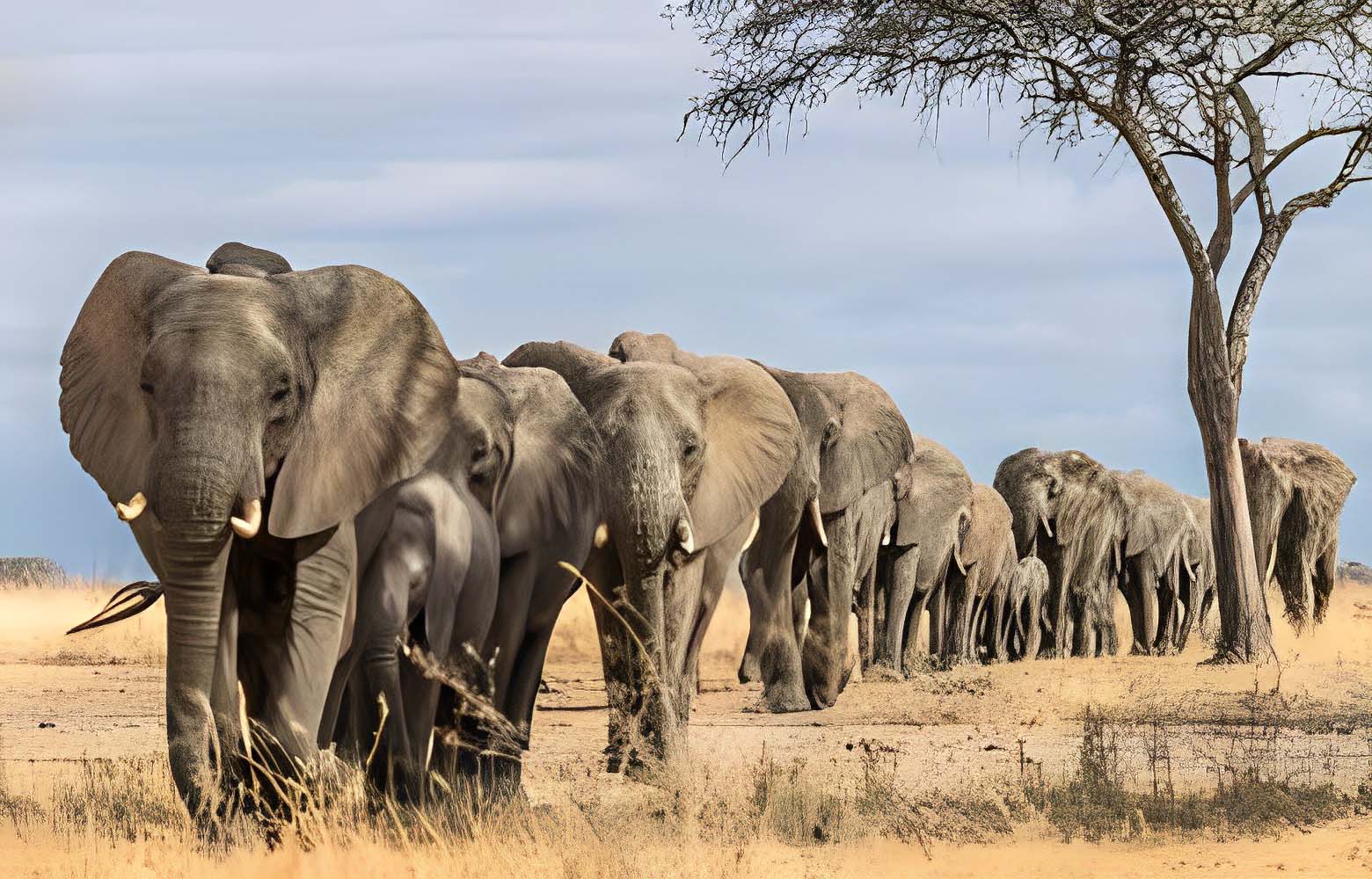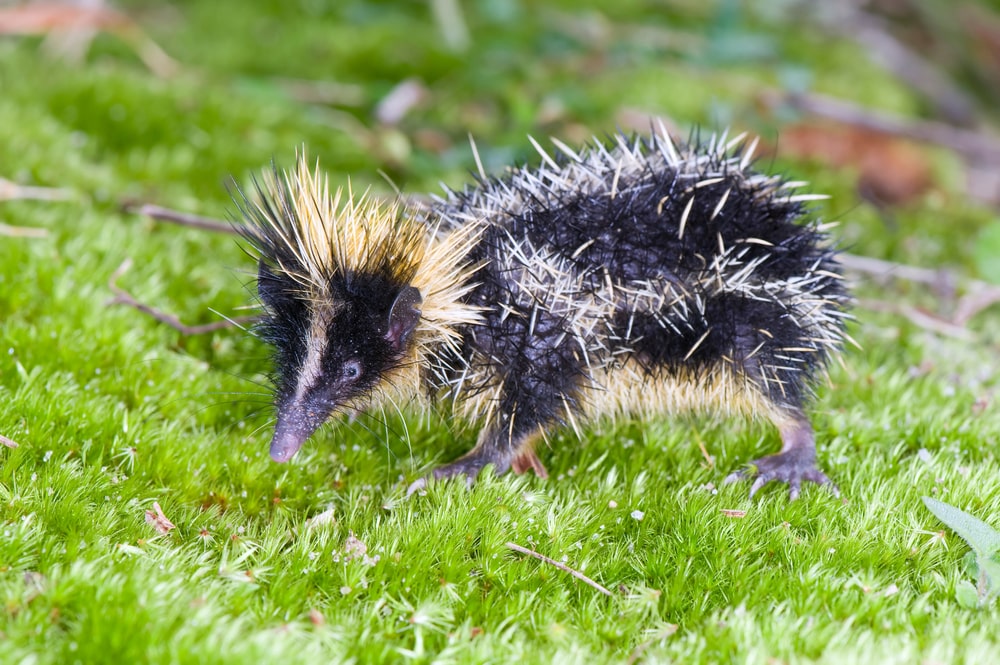Bizarre-looking Sea pig & Echidna Weirded Senses Animal
Unfortunately for the sea pig, this strange creature won’t be scoring any points on the cute scale unless an alien-like tentacled sea cucumber is your kind of thing.
Sea Pig facts
However, that doesn’t really matter, as very few people on this planet will ever witness a sea pig in their lifetime, given the fact that they live at the bottom of the deepest and coldest parts of the ocean. In what is known as the abysmal depths, the sea pig can tolerate pressures as deep as four miles beneath the ocean.
Although sea pigs were first described by a Swedish zoologist back in 1882, since then over 65 variations of this bizarre-looking species have been discovered, many of which have baffled scientists as to how and why they became so highly specialized on several occasions.
These sea pigs have been witnessed congregating in the thousands at the bottom of the seafloor, crawling along the sand in a strange array that seemingly has no other purpose. Not only that, but the sea pig is also one of the few creatures on the planet to successfully harbor parasites to a safe degree. The sea pig will allow small snails and crustaceans to bore holes into their bodies and feed on them internally for the rest of their lives. Yeah, well, your guess is as good as ours.
Sea Pig OR Sea Cucumber?
Sea pigs are a kind of sea cucumber that belong to the genus Scotoplanes. While there are multiple species in this genus we’ll be focusing mainly on the globosa species in this episode mostly because they’re the most iconic and they have the coolest name. Globosa. These plump, pink creatures.
Sea Pig Habitat
They live in the depths of the ocean and together with the other deep-sea dwelling sea cucumbers make up upwards of 95% of the total weight of animals on the seafloor. That’s a lot of piggies. Overall not much is known about sea pigs because they’re not exactly easy to study. For one, they’re extremely fragile and since one of the only ways to get them up from them bottom of the ocean is by trawling them with a net a lot of specimens will just kind of disintegrated when they’re caught.
Poor little blobs. Plus, because they live at depths anywhere from half a mile to more than three and a half miles (1000 to 6000 meters) below the ocean’s surface, they’ve evolved to live in conditions that are extremely difficult to replicate on the surface. Down there it’s completely void of light, the temperature typically hovers right around freezing and the water pressure is so great it would make a styrofoam cup shrink to less than half its size.
While we have been able to keep a few sea pigs on the surface it was never for long stints of time and the cost was really high. Sorry to dash the hopes of anyone out there wanting to own a sea pig. On the plus side, since they’ve become more popular as a species, you can get toys of them (though why they have eyes is beyond me…).
Sea Pig Name
Sea pigs possibly got their name for two reasons. One is because they generally look somewhat porcine possessing a pinkish toned body and short, stumpy legs. Another could also be based on their mud-sifting eating habits. Either way, you wouldn’t want to take a bite out of one of these piggies. They have toxic chemicals in their skin making them highly unpalatable. Besides, how could you eat such an adorable thing? They are usually about 5 inches long [12.7 cm] and could probably easily fit into the palm of your hand.
Sea Pig Size & Appearance
They’re mostly made of water so I wonder if it would be anything like holding a water balloon. Their “legs” (which are really called tube feet) come in pairs of usually 5 to 7 with the bottom “legs” used for locomotion. I say bottom because the antenna looking things on top of them are actually feet as well, though they’re not used for walking. These are more like nose… feet. It’s believed that these are used as a sensory organ, like a nose, that aides in finding food that’s less than 100 days old, since they prefer it fresh.
Sea Pig Diet
What they eat? you might find kind of gross. Marine snow is an amalgamation of plankton debris, dead animal particles and poop. This is part of the main portion of a sea pigs’ diet. They also eat microbes on the seafloor, though probably their favorite meal is dead whale. While up until this point I can’t remember thinking to myself, “I wonder what happens when a whale dies,” now I have a pretty good idea. Something that’s pretty cool is that when sea pigs find a large deposit of food, such as a whale carcass, they will gather in droves to that spot.
I’m talking like hundreds of sea pigs all in one spot. And when they do that, it’s been observed that they will all face in the same direction. They do this so that they’re facing the prevailing current thus giving them more opportunity to detect the best spot for food, though I feel like this could be the premise for some alien cult movie or something. Sea pig dietary habits are actually pretty important.
They’ve been described as the earthworms of the sea and if you want to know more about what that statement might mean, we have a video for that! While they forage through the soil and consume oxygen eating microbes then end up releasing oxygen through their waste making the sediment better for tons of small animals living on the seafloor, or, you know, the other 5%.
Sea Pig Threats
Unlike some other sea cucumbers, they don’t have fish who frequently like to live in their butts nor do they expel all their organs as a defense mechanism for predators, though we’ll have to get back to that in another episode. In reality, we’re not completely sure if sea pigs even have any predators, though we do know that they are hosts to parasites, one being a snail that burrows into their body and feeds on them internally and a tiny crustacean that bores holes into them and eats their organs. *audible shudder* Nope. Just nope.
Sadly, we also don’t have much information on how they reproduce or even how long they can live, though I guess that means, for now, we can pretend they’re all thousands of years old and planning their world invasion or, you know, how to eat a shark.
Reference: https://www.youtube.com/@AnimalFactFiles







